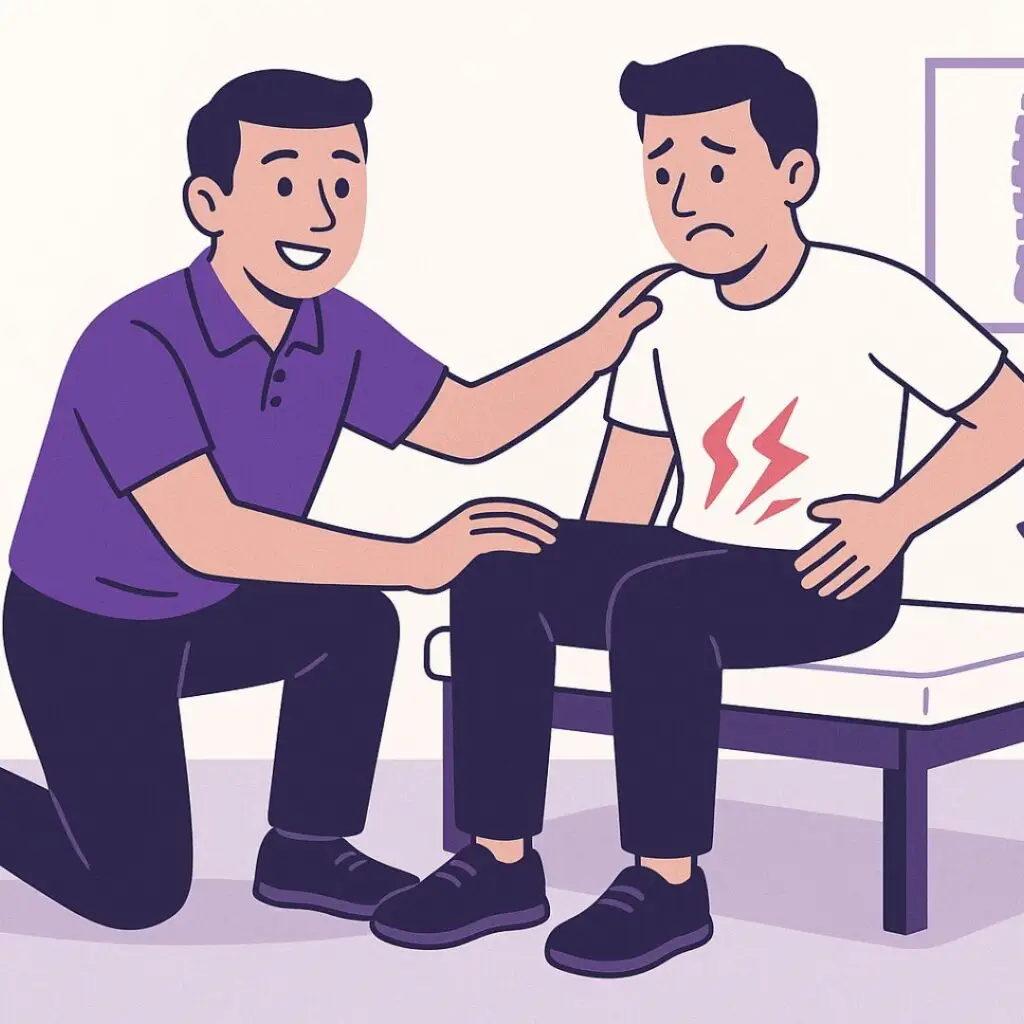Table of Contents
ToggleBack Pain Recovery Stages | Personalized Progression That Works




Why Most Back Pain Programs Fail
Back pain recovery isn’t one-size-fits-all — but most programs treat it that way.
Most traditional back pain treatments fail because they assume all back pain is the same, when in reality, the cause of pain — and the corrective strategy — varies dramatically from person to person. Here’s where typical rehab programs go wrong:
❌ 1. “All Lower Back Pain Is Treated The Same” – Dr. Sasha
Stretching your hamstrings, doing planks, or using massage guns might help some people — but they could worsen symptoms for others. For example:
Someone with flexion-based pain might feel worse with forward bends
Someone with instability issues might be aggravated by mobility drills
Generic routines ignore this nuance, resulting in a failed back pain recovery.
❌ 2. “More Treatment Is Not Better. Better Is Better” – Dr. Rich
Techniques like soft tissue therapy, acupuncture, cupping, massage, and joint manipulations have their place — but they’re often used as the main strategy, not a supportive tool. They’re passive. They feel good temporarily. But they rarely create lasting change unless paired with a targeted, active plan.
When manual therapy is used without understanding what kind of movement intolerance a person has, it can actually:
Delay proper treatment
Reinforce dependency on providers
Mask symptoms instead of solving the root problem
❌ 3. Money, Money, Money
The more often you come in, the more the clinic bills. That doesn’t mean your provider isn’t trying to help — most truly are. But the system itself is set up to encourage ongoing care, even when what you might really need is a clear path forward and the tools to take control on your own.
The best back pain recovery programs and treatments must include education around the triggers of pain. Not just manual treatments!
Our Model Is Built Different
✅ We Admit It. This Is Not For Everyone. Our qualification criteria was specifically created to single out those that we feel, based on our clinical experience, are most likely to succeed.
✅ We Start With Categorization. This allows us to recommend the appropriate approach based on your presentation of pain. You get matched with the most appropriate starting point.
✅ Your Back Pain Recovery Is the Win We Care About Most. We don’t profit from how long it takes – because our goal is to help you get better, not just feel better temporarily. That’s real empowerment. That’s what recovery should feel like.
✅ Unparalleled Affordability. We believe that quality care shouldn’t come with an overwhelming price tag. You get lifetime knowledge to a proven, structured recovery system — designed by healthcare professionals — for less than the cost of single treatment session.
A Bit More About Our Approach
Back pain recovery requires different strategies — and doing the wrong exercises for your specific issue can actually make your symptoms worse.
For example:
Some people need to avoid bending forward to protect irritated discs.
Others need to avoid bending backward to take pressure off sensitive joints.
Some experience pain when twisting, and need to focus on stabilizing their spine.
Others feel shooting pain into the leg, and need exercises that relieve nerve pressure.
Knowing which movements your body struggles with — and which ones it can tolerate — is the first step to real back pain recovery.
At LBPfix, we help you identify the pattern of your pain, so you can follow a path that’s safe, effective, and built around your body’s needs.
For Example

Pain Bending Backwards
Bending backward (also called extension) can pinch or irritate sensitive structures in the lower back — especially the facet joints. This type of pain could be sharp and pinch-like.

Movement Prescription
Movements that open the spine (like gently bending forward) often feel better whereas movements that reproduce the opposite may exacerbate the problem.
Importance Of Specific Exercise
When it comes to back pain recovery, what you do — and what you avoid — matters.
That’s because different back problems respond differently to movement.
The wrong exercise can increase pressure on an irritated disc, strain sensitive joints, or aggravate nerve pain — making your symptoms worse instead of better.
✅ The right exercise, matched to your specific pain pattern, helps to:
Calm inflammation and allow natural healing.
Relieve pressure from sensitive structures (like discs, nerves, or joints).
Rebuild strength without triggering more pain.
Restore confidence in movement without fear or hesitation.
Targeted exercise isn’t just about feeling better today — it’s about creating lasting change.
When you move in ways that your body can handle, you build strength, resilience, and a foundation that protects you from future flare-ups.
At LBPfix, we focus on guiding you to the right movements for your body — so you can recover faster, move with confidence, and get back to doing what you love.
